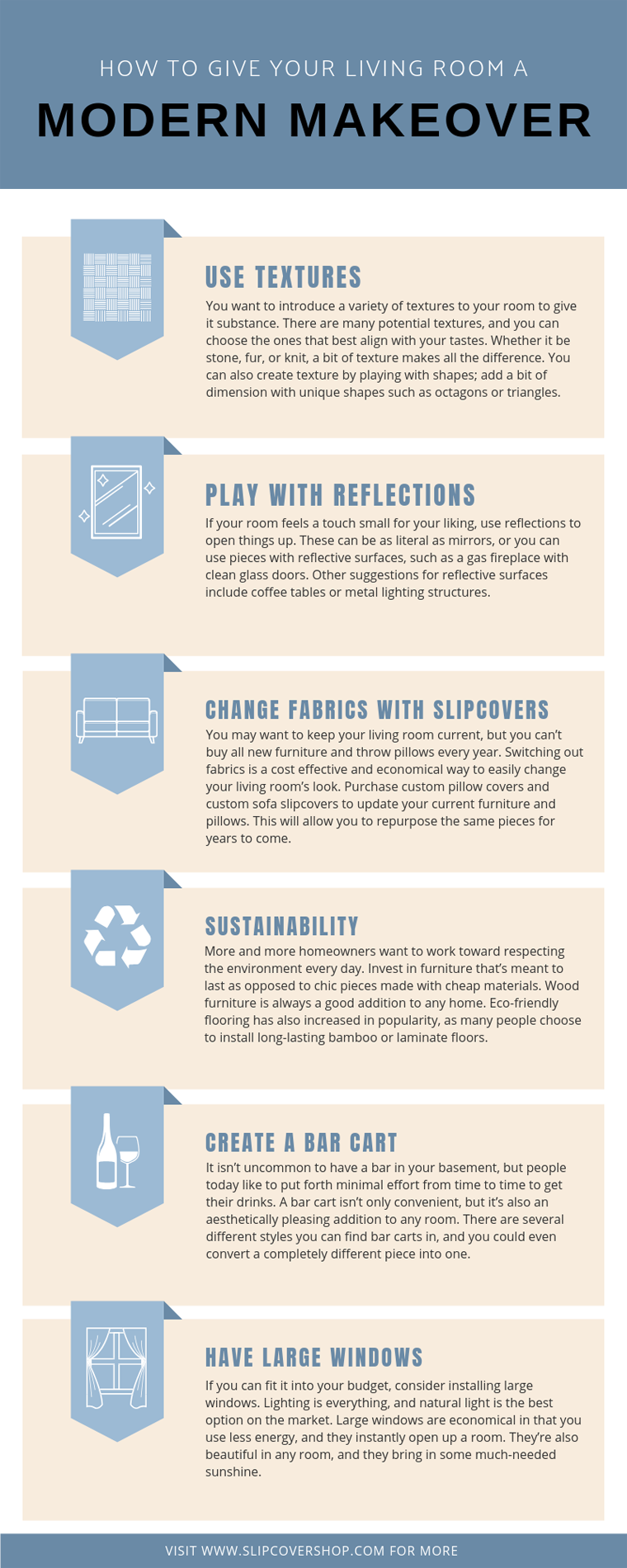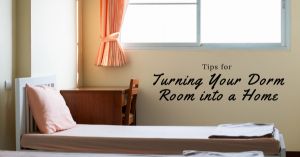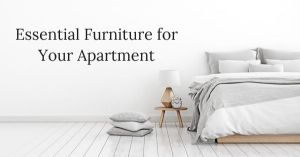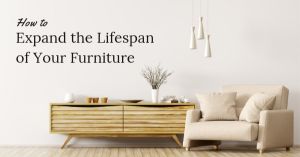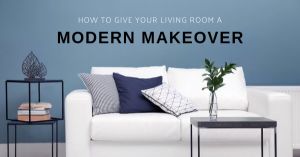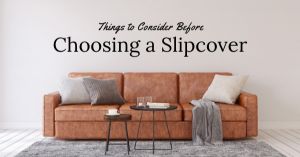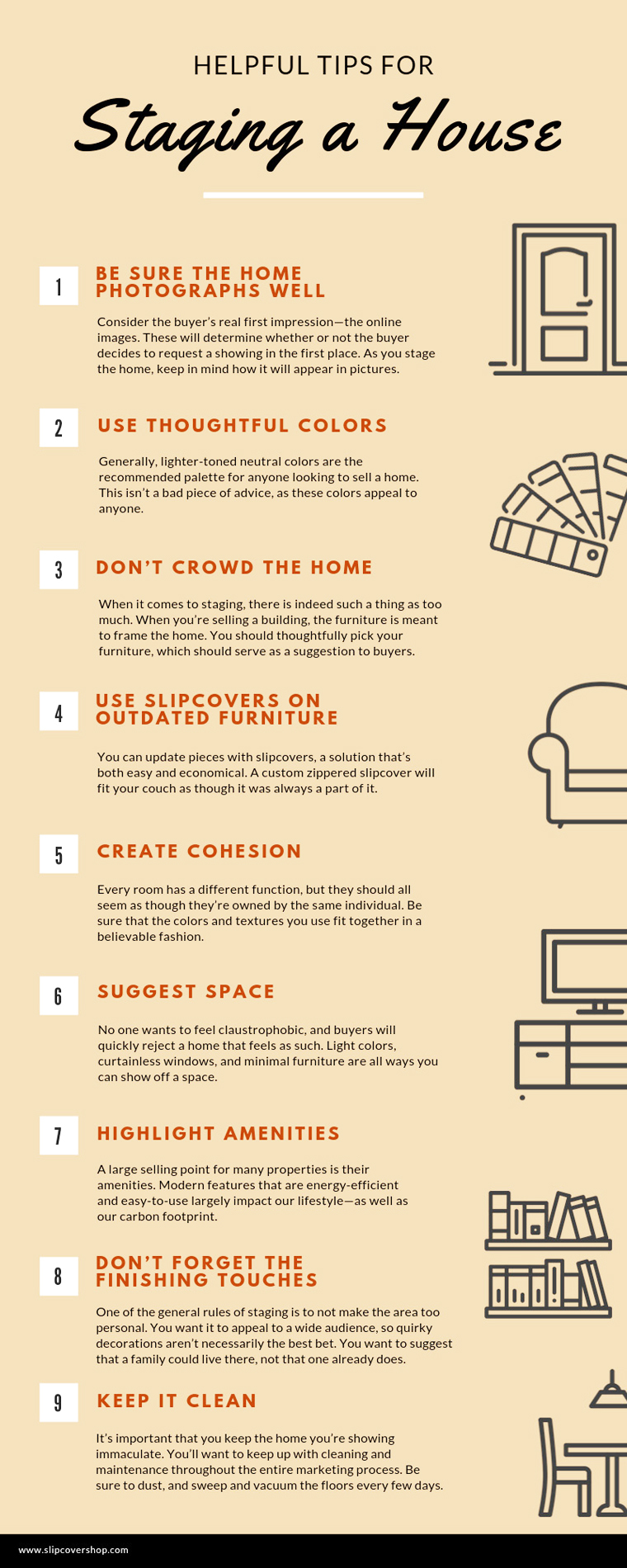Trends change every year, and we all want to be a part of the next big thing. When we update our homes, we want them to be modern and to last. To help you achieve this, we’ve created a guide on how to create a modern living room, and we’ve tailored it to blend styles that have been around for years with ones that have had a recent surge in popularity. We’re sure that if you utilize this balance, you’ll have a living room that truly aligns with the times and your personality.
Use Textures
A room can often feel as though it lacks true dimension. You want to introduce a variety of textures to your room to give it substance. There are many potential textures, and you can choose the ones that best align with your tastes. Whether it be stone, fur, or knit, a bit of texture makes all the difference. You can also create texture by playing with shapes; add a bit of dimension with unique shapes such as octagons or triangles.
Play with Reflections
If your room feels a touch small for your liking, use reflections to open things up. These can be as literal as mirrors, or you can use pieces with reflective surfaces, such as a gas fireplace with clean glass doors. The less obvious solutions, such as the fireplace, give a feeling of more space without overwhelming any one area of the room. Other suggestions for reflective surfaces include coffee tables or metal lighting structures.
Add Some Matte Black…
As far as color goes, the white blank canvas look that we’ve held onto for so long is bowing out at last, and its opposite has taken center stage. While white always seemed to suggest the future, today’s designers want to focus more on the present. Matte black feels current, and it’s the current favorite of many designers to use in furniture, flooring, and wall color.
… With a Pop of Color
While we suggest bringing in everyone’s favorite muted color trend, we also recommend adding something that serves to enhance this. An all-black room can feel depressing, but not if it’s done right. Pops of color, such as an accent wall, pillows, or piece of furniture, add a bit of fun into the mix. We recommend using bold colors, such as a neon green or salmon, to create a stark contrast with matte black pieces.
Change Fabrics With Slipcovers
You may want to keep your living room current, but you can’t buy all new furniture and throw pillows every year. Switching out fabrics is a cost effective and economical way to easily change your living room’s look. You want to be sure, however, that you invest in high-quality fabric that fits your personality. Purchase custom pillow covers and custom sofa slipcovers to update your current furniture and pillows. This will allow you to repurpose the same pieces for years to come.
Create Transitions
You can certainly play with opposites, but you should still create a sense of cohesion in a room. Be thoughtful as you decorate, and be sure that everything in the room contributes to the overall picture. You also should make sure your choices allow one thing to flow into another. If you want to take things a step further, don’t create a stark contrast between your living room and the rest of your home. The transition between the living room and the room that leads into it should feel seamless.
Use Functional Pieces
If you look hundreds of years back, most people were sure that everything in their home was completely functional. There was no spending time and money on things that weren’t useful to their way of life. Everything in your room should serve a purpose—even your artwork should inspire emotion from those who view it. Decorators today get clever with the ways they create functionality, and use tricks and furniture pieces to conceal drawers and televisions when they aren’t utilized.
Sustainability
How you impact the environment should play a large role in determining your furnishing decisions. More and more homeowners want to work toward respecting the environment every day. Invest in furniture that’s meant to last as opposed to chic pieces made with cheap materials. Wood furniture is always a good addition to any home. Eco-friendly flooring has also increased in popularity, as many people choose to install long-lasting bamboo or laminate floors.
Install Wallpaper
You may remember the wallpaper in your grandparent’s house was completely outdated. Like anything else, however, wallpaper is making a comeback. People use it in creative ways, such as on accent walls or furniture. You can purchase wallpaper in many patterns, and you’ll likely find something to suit your tastes. The one thing to keep in mind is that wallpaper is incredibly difficult to remove, so you need to commit to your decision.
Create a Bar Cart
It isn’t uncommon to have a bar in your basement, but people today like to put forth minimal effort from time to time to get their drinks. A bar cart isn’t only convenient, but it’s also an aesthetically pleasing addition to any room. There are several different styles you can find bar carts in, and you could even convert a completely different piece into one.
Have Large Windows
If you can fit it into your budget, consider installing large windows. Lighting is everything, and natural light is the best option on the market. Large windows are economical in that you use less energy, and they instantly open up a room. They’re also beautiful in any room, and they bring in some much-needed sunshine.
Make it You
Ultimately, you can follow any trend you’d like, so the most important thing is that you create a room that reflects your personality. Your home is meant to reflect your tastes and who you are as a person. It’s fun to integrate trends into our home, but it should be ones that we actually like. If someone says that minimalism is in but you like displaying multiple decorations, don’t think you have to get rid of them. Decorate your space how you want, and you’ll never go wrong. 